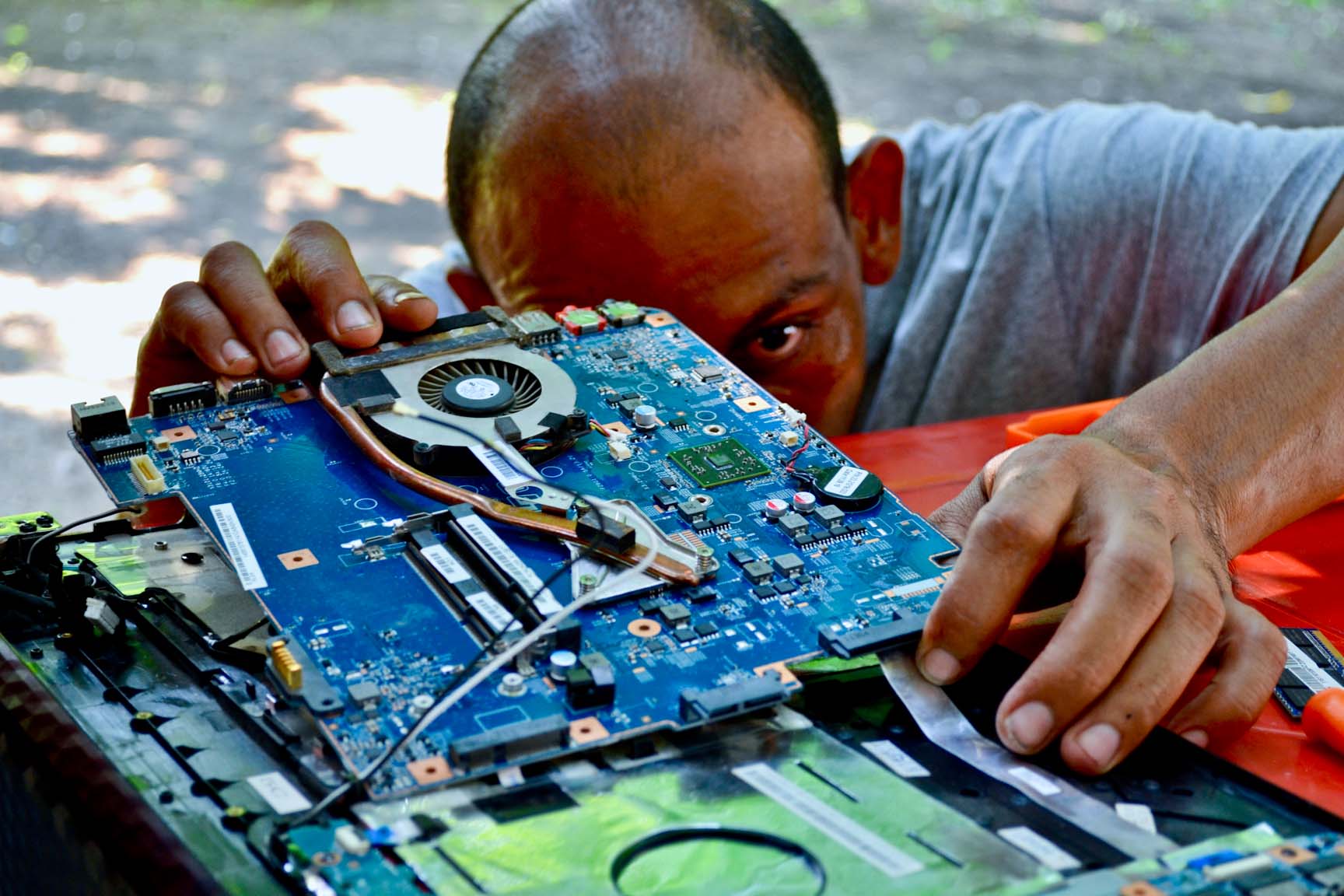Axel crouches down to examine a busted laptop in the rural pueblo of Chahuites, Mexico. One eye is hidden behind the whirring gadgetry of the computer’s motherboard, the other inspects whatever circuitry might have shorted in the sweltering summer heat. Just outside of the frame, the villagers of Chahuites look on ecstatically; before Axel arrived, the closest computer technician was over an hour’s drive away, and his repairs cost at least several days’ wages. Axel, on the other hand, is undocumented and hungry, and he has agreed to fix the laptop in exchange for dinner.
When Axel was one year old, his mother fled the Guatemalan civil war, literally carrying him across the US border in her arms, and they resettled on Long Island. It wasn’t until Axel was fifteen that he learned he wasn’t an American citizen. Computers became an outlet to escape the boundaries of his undocumented status. “I didn’t need documents to be somebody online,” he said. Computers provided a way to momentarily leave his material body behind, to travel freely through whatever digital spaces he pleased.
Axel was deported to Guatemala the first time at the age of 35. With no connections in the country, he was soon spotted by MS-13 gang members, who, believing he was a rich because he had lived in the US, threatened to kill him if he did not pay a large ransom. Axel fled to Mexico and drifted between small towns, fixing computers, cell phones, and internet routers for room and board. In Mexico, Axel remains an undocumented immigrant, unable to work legally or qualify for social services, just like in the US.
If “photography records the gamut of feelings written on the human face” (Steichen 1961), this photograph tries to capture the ambiguity of a world made faceless not only by online interaction, but also by militarized borders. Today, the other is the one on the opposite side of the (fire)wall. My camera leans toward Axel in an attempt to break this wall, so close that the a tension is palpable. He stares back, but only from behind the boundary of the laptop, his face rendered semi-anonymous by the machinery. The circuits and sockets of the motherboard almost appear to be a landscape all their own, one that is not too dissimilar from the tightly-cordoned, quadrangled geography spanning much of the US-Mexico border. Axel blends into it and stands apart from it at the same time.
If citizenship is ambiguous and ethereal, electronics provide Axel a materiality he can hold onto. When they don’t work, he can reach inside their guts and build them back anew with his own hands. The fixing of computers runs parallel to the fixing of his identity. With no repairmen in rural Mexico, when one’s phone or computer breaks, it is gone for good, and with it much of one’s contact with the outside world and identity. To lose a phone today is also to lose a camera, a phonebook, and a photo album. A busted phone was often the only way for a Chahuites villager to communicate with a family member in the US, or contained the sole photographs of dead loved ones. A revived cell phone or computer had the capacity to reunite families (electronically, at least) and ensure that the dead could be remembered (and therefore return to the world of the living during Día de los Muertos).
Resurrecting computers is Axel’s own magic. It is a rapturous process, an expertise that defies the camera and the cameraman. Most of the work happens inside the mind and the microchip, inaccessible to the eye or lens. Such are interactions in our modern world: one man and machine (me with my camera) interacting with another man and machine (Axel with his computer). The machines provide the source of the interaction and the boundaries that define it.
Not long after this photograph was taken, the laptop, cradled in Axel’s hands, began to hum again, crossed from one plane to another. Axel handed it back to its owner and asked what time they might eat. He wanted to Skype his mother before dinner.

Commentary on Rachel Tanur's Works: Cuban Elbow